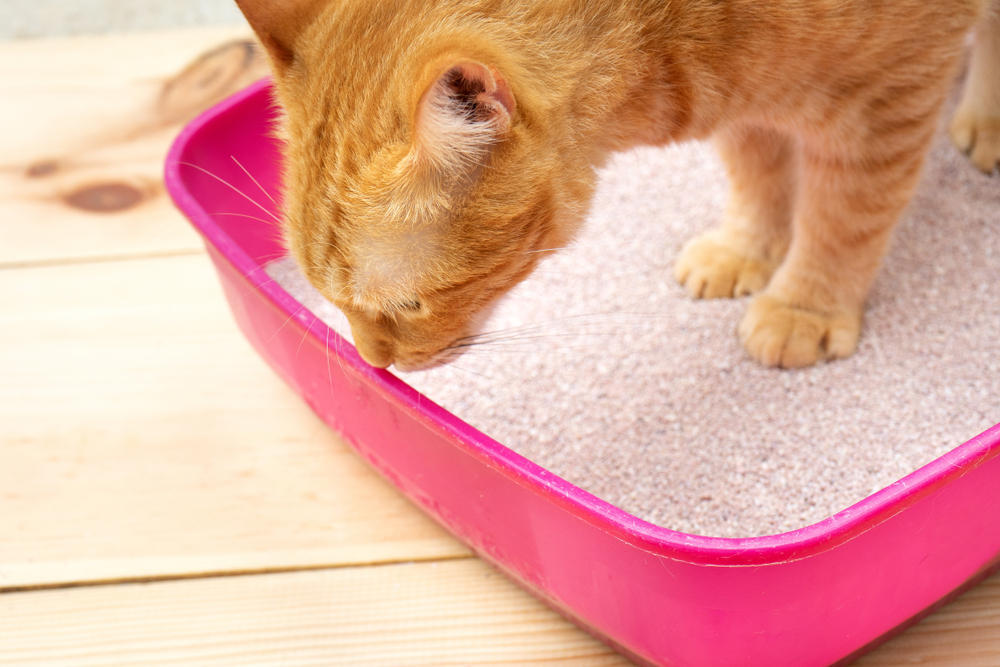The A B C’s of the Humble Litter Box

As cat owners, we may not give a lot of thought to the humble litter box. After all, among the many things needed to care for our kitty friend, the best litter box probably isn’t on the top of our wish list. But your pet’s litter is an important part of keeping kitty happy and going where she should. A litter box can turn troublesome when problems with accidents and smells, among other issues, become apparent.
This is why your veterinary partners at Oakland Veterinary Referral Services are here to relay the basics of the litter box and what your choices can mean for your cat.
Options in Litter Boxes
There are several kinds of litter boxes to choose from, depending on your meow pal’s preference.
- Basic Rectangular Pan – A common type of litter box is your basic rectangle-shaped plastic box that is open at the top. Most cats prefer this to covered boxes because they feel less trapped and are able to get out quickly. This is an escape drive that most felines have and these boxes are less likely to accumulate odor.
- Covered Container Litter Box – A covered box with some type of privacy flap is another popular choice. If your cat doesn’t mind the confinement, these litter boxes aren’t quite as unsightly (because who wants to look at litter). Pet owners assume, though, that a covered box will control odor better, and this isn’t the case. Only cleaning and scooping frequently will do the trick.
- Sifting Litter Box – In recent years, a 3-layer sifting litter box was introduced to make litter scooping obsolete. Some people love this more expensive, more attractive litter box, but it isn’t perfect.
- Self-cleaning Litter Box – The self-cleaning litter boxes contain a motorized component that dredges through the litter. It deposits the waste in a separate container that you can take out and dump. Some owners swear by their automated litter box, but it’s still important to dump out old litter and clean the box manually once every few weeks.
Whatever type of litter box you choose, you will need to select a box that is big enough and deep enough to provide ample room for your cat. Most are rectangular and should be at least 1.5x the length of your cat (cats aren’t fond of cramped litter boxes).
How Many Litter Boxes Should You Have?
Many pet owners make the mistake of only having one litter box per for their cat. In fact, cats need two per cat in the home to reduce the likelihood of spraying and accidents outside the box. We realize this isn’t always possible.
Each box should ideally be placed in an area where your pet has some privacy. Avoid placing the litter box in areas that are noisy, such as the laundry room, or in a high traffic area.
The Litter
Each cat will have their own preference in litter material. You may have to try out a few to determine the right one for your pet but cats generally prefer smaller, finer particles similar to sand. Crystal pellets can be annoying to kitty paws.
In most cases, your standard clay or sand-based clumping litter does the trick and will make for easier cleanup. Fill the box with at least 3 inches of litter up to half the depth of the box with fresh litter.
For pets allergic to dust, there are some dust-free litter available as well. Avoid using scented litter as this can be an aversion to your cat using the litter. Heavily perfumed litter can be overwhelming.
Cleaning the Litter Box
In order to keep your cat happy and free of infection from a dirty litter box, plan to scoop the litter once a day. Remove the clumps and add more clean litter to the pan. Rinse your pet’s litter box out once every few weeks to maintain cleanliness, which is something both you and your cat will appreciate.
For more information on the A, B, C’s of the litter box, talk to your veterinarian at your whiskered friend’s next wellness examination.


